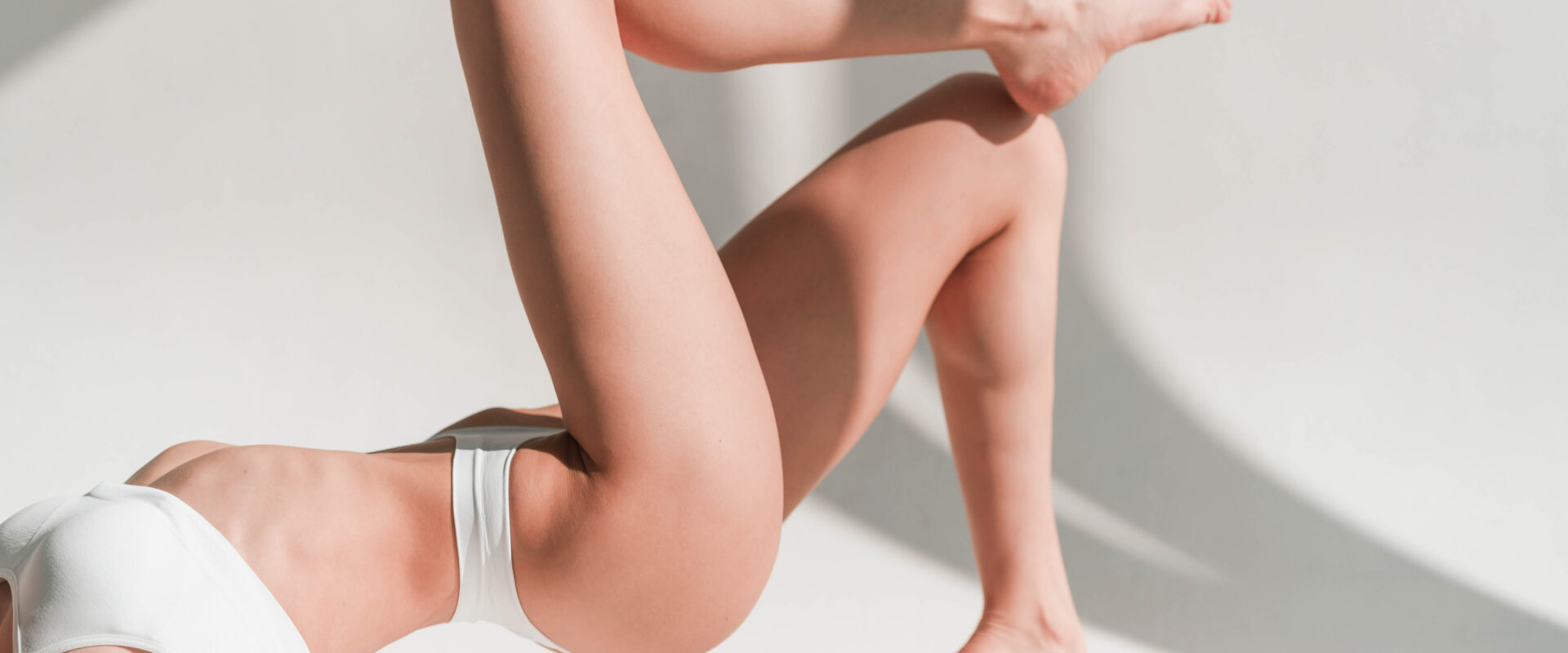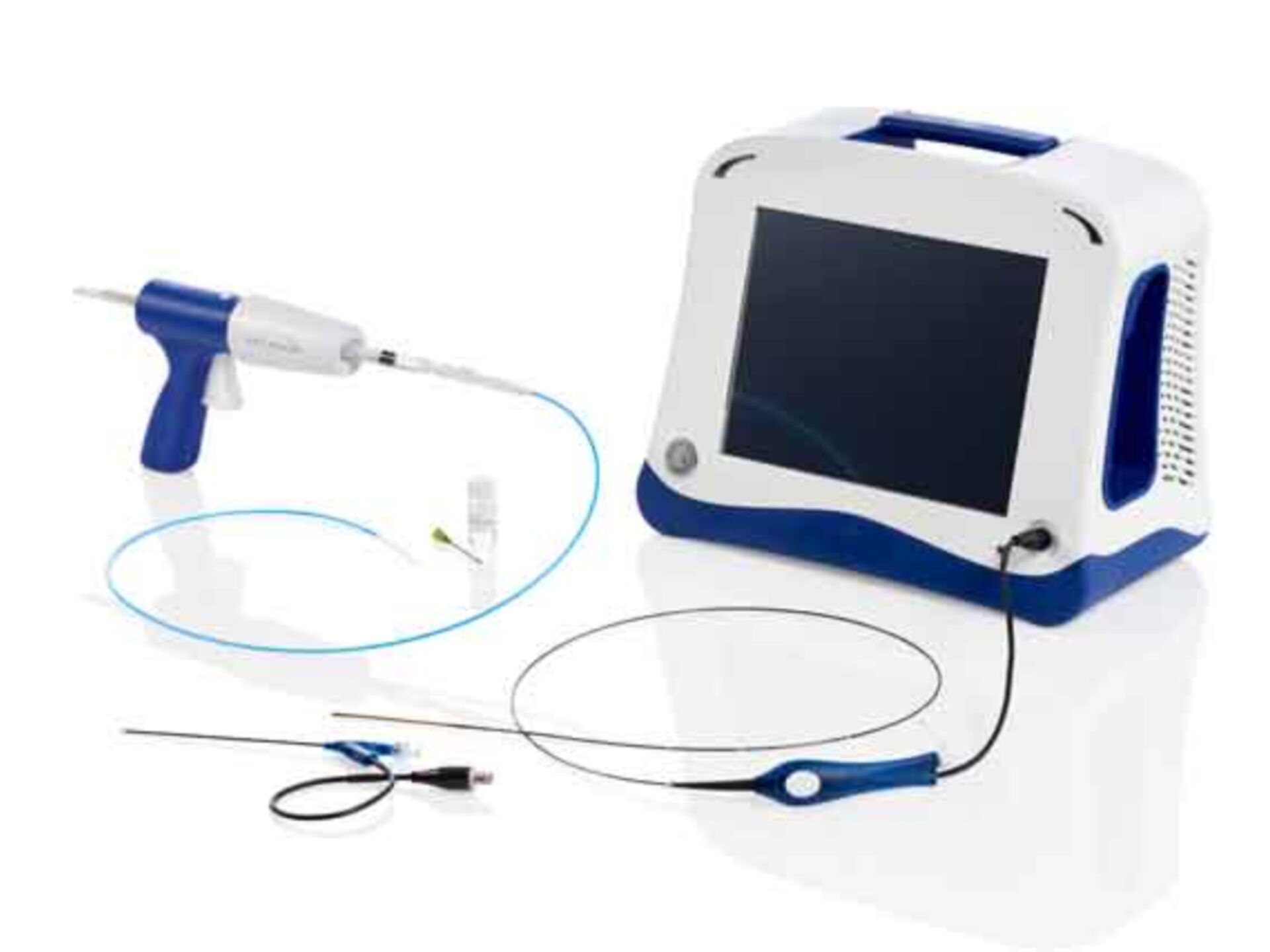What are varicose veins? Definition and basics of the disease
Varicose veins, also known as varicose veins, are dilated and tortuous veins that occur mainly in the legs. These veins have lost their normal elasticity and can become enlarged and irregularly shaped. Varicose veins are often associated with a malfunction of the venous valves, which normally regulate the flow of blood towards the heart.
Causes:
The main cause of varicose veins is often a weakening or damage to the venous valves. When these valves no longer function properly, blood can back up and pool in the veins, causing the veins to dilate.
Risk factors:
Various factors can increase the risk of developing varicose veins, including genetic predisposition, gender (women are more commonly affected), pregnancy, obesity, standing or sedentary work for long periods of time and lack of exercise.
Symptoms:
Varicose veins can range from mild cosmetic problems to symptoms such as pain, heaviness, swelling and cramps. In advanced cases, skin changes, eczema or even ulcers can occur.
The development of varicose veins and where they occur
Varicose veins, i.e. enlarged superficial veins, are particularly common in the legs. They are usually caused by weak or defective venous valves. Arteries transport oxygen-rich blood from the heart to the rest of the body, while the used, deoxygenated blood returns to the heart via the veins.
As the blood in the veins flows at a comparatively low pressure and has to work against gravity as it flows back through the legs, the body has two important aids at the ready: the muscle pump in the legs and the venous valves. The venous valves open when the blood flows towards the heart and close like a kind of non-return valve as soon as it flows back.
If the venous valves do not function properly, blood flows back and the pressure in the veins increases. This can cause the vein walls to overstretch and/or twist, resulting in varicose veins.
Recognize varicose veins early: Understanding symptoms and causes
Early detection of varicose veins is important to minimize possible complications and take appropriate measures for treatment. These things can be signs of varicose veins at an early stage:
Visible signs:
Look out for visible, tortuous and dilated veins that stand out under the skin, especially on the legs. These may be bluish or reddish in color. Small, net-like veins, so-called spider veins, can also be an early sign of venous problems.
Swelling and a feeling of heaviness:
Varicose veins can be accompanied by slight swelling or a feeling of heaviness in the legs. This may be more pronounced after standing or sitting for a long time.
Pain and discomfort:
Varicose veins can also be associated with slight pain or an uncomfortable feeling of pressure in the legs. These symptoms can worsen during the day.
Tiredness and cramps:
Feelings of tiredness, especially in the legs, and muscle cramps may indicate venous insufficiency.
Itching and skin changes:
Itching around the affected veins and changes in skin color (such as brown discoloration) can be signs of varicose veins.
The symptoms of varicose veins can vary and not all people with varicose veins will necessarily have symptoms. People with a family history of varicose veins or those who have risk factors should pay particular attention to changes in their legs. If you are unsure or if symptoms occur, it is advisable to have your veins examined. Early intervention can help to slow down the progression of varicose veins and minimize the risk of complications.
Removing varicose veins: 6 methods
When is varicose vein treatment necessary?
Treatment of varicose veins is necessary if the symptoms cannot be sufficiently alleviated by general measures. Varicose veins can cause various symptoms, including heavy and tired legs, swollen feet and ankles, cramps in the calves at night and itching. These symptoms can worsen during the day, in warm weather or after prolonged standing or sitting.
If the varicose veins are very troublesome due to their appearance or if complications such as leg ulcers occur, treatment is also advisable. Untreated varicose veins can lead to inflammation of the veins, eczema and, in the worst case, leg ulcers.
Complications and risks of untreated varicose veins
Untreated varicose veins can lead to various complications. Every varicose vein, even if it does not cause pain, represents a disruption to normal blood circulation. If varicose veins are left untreated for a long time, they can lead to skin discoloration, chronic inflammation of the skin and severe nutritional disorders of the tissue1. These can manifest themselves as hardening, brown discoloration or light pigmentation of the skin, particularly in the ankle area and on the lower leg.
Without the right treatment, vein inflammation, thrombosis or an open leg can occur in later stages, which are much more difficult to treat. A leg ulcer ("open leg") is the most common complication of varicose veins. An open wound develops in around 3 to 6 percent of those affected if varicose veins are left untreated. Other possible complications include phlebitis, thrombosis or bleeding - although these are rare.
Complications can be avoided if varicose veins are detected early and treated properly. It is therefore important to take even minor changes and complaints in the legs seriously and consult a doctor at an early stage.
Source: Federal Ministry of Health (https://gesund.bund.de/krampfadern)
7 preventive measures against varicose veins
Varicose veins can be prevented by various measures:
- Healthy lifestyle: A balanced, high-fiber diet, weight control, sufficient exercise and sleep, and avoiding smoking can help to maintain vein function for as long as possible.
- Exercise: Regular physical activity such as walking, running, swimming, cycling and vein exercises can strengthen the calf muscles and promote blood circulation.
- Avoid prolonged standing or sitting: The rule of thumb against varicose veins is to lie down and walk rather than sit and stand.
- Compression stockings: Wearing compression stockings can support the return flow of blood and prevent the development of varicose veins.
- Promoting blood circulation: Walking barefoot, alternating showers and Kneipp baths/showering can promote blood circulation.
- Avoid high heat and saunas: Heat dilates the blood vessels, which can promote the development of varicose veins.
- Raise your legs: If you have aching, swollen legs, they should be elevated to relieve pressure on the veins.
It is important to note that the tendency to develop varicose veins remains even after successful treatment. Preventive measures are therefore also important after treatment.
Different types of varicose veins: A detailed look
There are different types of varicose veins:
Spider veins: These are a less pronounced form of varicose veins and appear as small reddish or bluish branches in the skin. Medical treatment is not usually necessary.
Reticular varicose veins: These are located directly under the skin and are also known as reticular veins. They are thin, net-like veins with a thickness of around 1-3 mm.
Lateral branch varices: These are either present on their own or are the result of chronic venous congestion caused by trunk varices.
Truncalvarices: If the truncal veins are affected by non-closing valves, they are called truncal varices. The small and large saphenous veins (great saphenous vein and saphenous vein parva) are most frequently affected.
Another type is perforating varices, in which connecting veins between the deep and superficial venous system are affected.
Frequently asked questions about varicose veins
There are several signs that indicate varicose veins:
Visible veins. An obvious indication of varicose veins is the appearance of tortuous, dilated veins, particularly on the legs. These veins may be bluish or reddish in color. Small, net-like veins, so-called spider veins, can also indicate this.
Swelling and heaviness. Varicose veins can be accompanied by slight swelling, especially after long periods of standing or sitting. A feeling of heaviness or tiredness in the legs may also occur.
Pain and discomfort. Pain or an unpleasant feeling of pressure in the legs are possible signs of varicose veins. These symptoms can worsen during the day.
Muscle cramps and fatigue. Muscle cramps, especially at night, and a general feeling of tiredness in the legs could indicate venous insufficiency.
Itching and skin changes. Itching around the affected veins and changes in skin color, such as brown discoloration, could be signs of varicose veins.
Varicose veins mainly form in the legs. This is because the blood in the legs has to flow back to the heart against the force of gravity. The venous valves in the legs open when the blood flows towards the heart and close like a kind of non-return valve as soon as it flows back. If these venous valves do not function properly, blood flows back and the pressure in the veins increases, which can cause the vein walls to overstretch, resulting in varicose veins.
Varicose veins most commonly develop on the calves, near the back of the knee or on the inner thighs when blood backs up in the superficial leg veins on the inside of the leg or on the back of the lower leg.
If you have or suspect that you have varicose veins, you should consult a specialist in vascular diseases. This is usually a vascular surgeon or phlebologist. These doctors specialize in the diagnosis and surgical treatment of diseases of the veins, including varicose veins. If you have already developed visible varicose veins, you should always consult a doctor for further diagnosis. Only a specialist can determine the extent of the disease and determine a suitable treatment. At our facility, we specialize in this condition and treat thousands of patients every year.
Recovery after varicose vein surgery can vary depending on the type of operation and the patient's individual healing process. As a rule, patients can return to normal work after around one to two weeks, or even sooner with some procedures. In the first few days after the operation, however, you should still be careful and take it easy in order to achieve the best possible recovery.
After the procedure, it is important to keep your legs elevated to support the healing process. We normally remove the bandage applied after varicose vein surgery on the first day after the procedure.
If you suspect that you have varicose veins, the first step is a specialist examination, which usually includes a color-coded duplex ultrasound scan in addition to functional diagnostics and a clinical examination. This allows the extent of varicose veins to be determined and an individual treatment recommendation to be made.
Appointments for such an examination can be made online at doctolib or by telephone on 0611 910 24 20.

